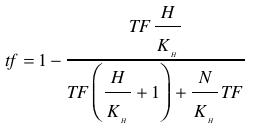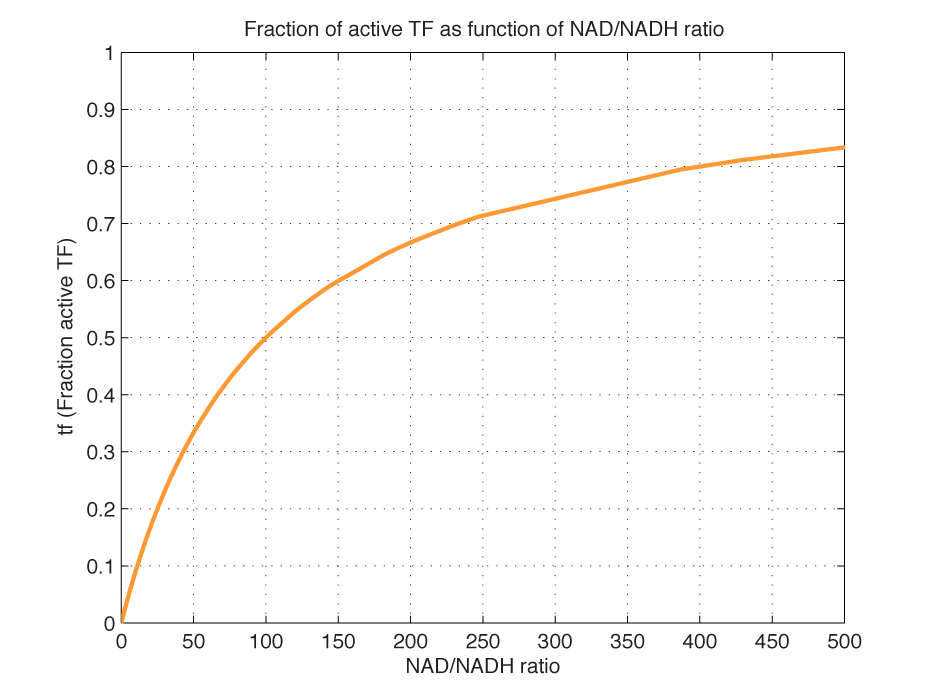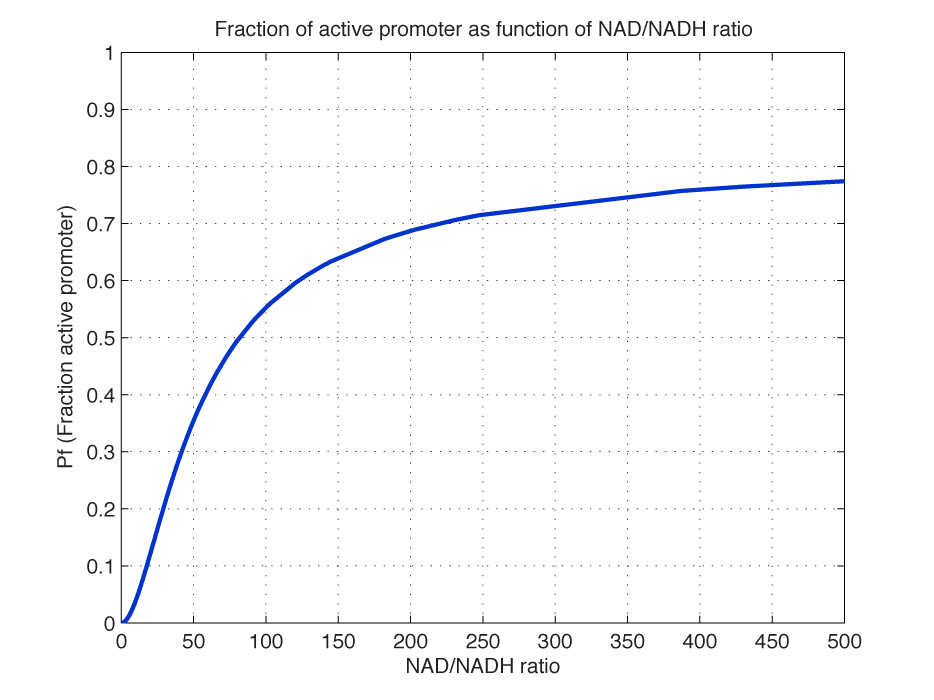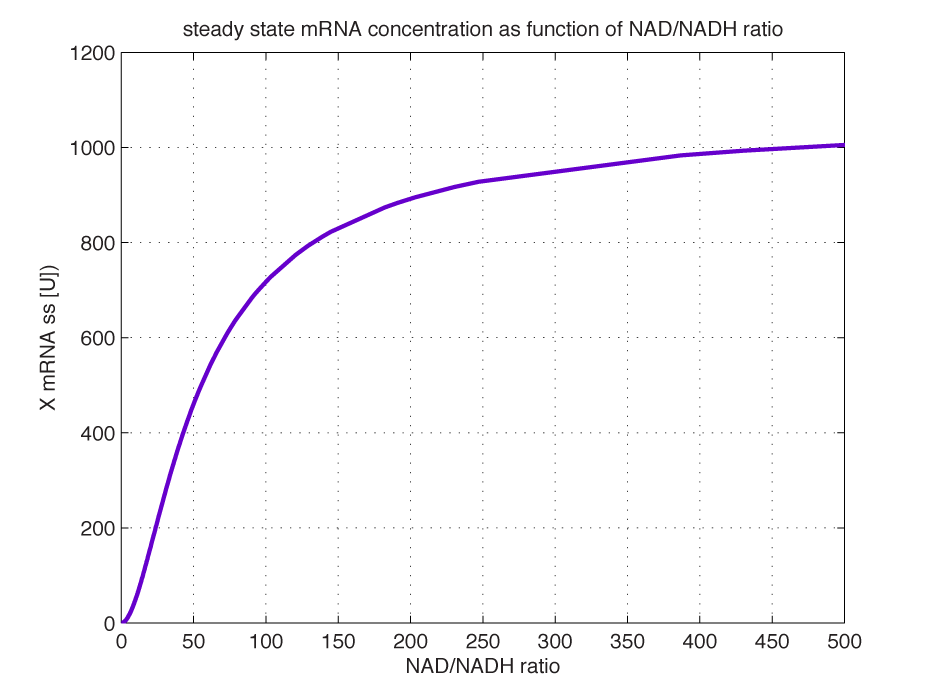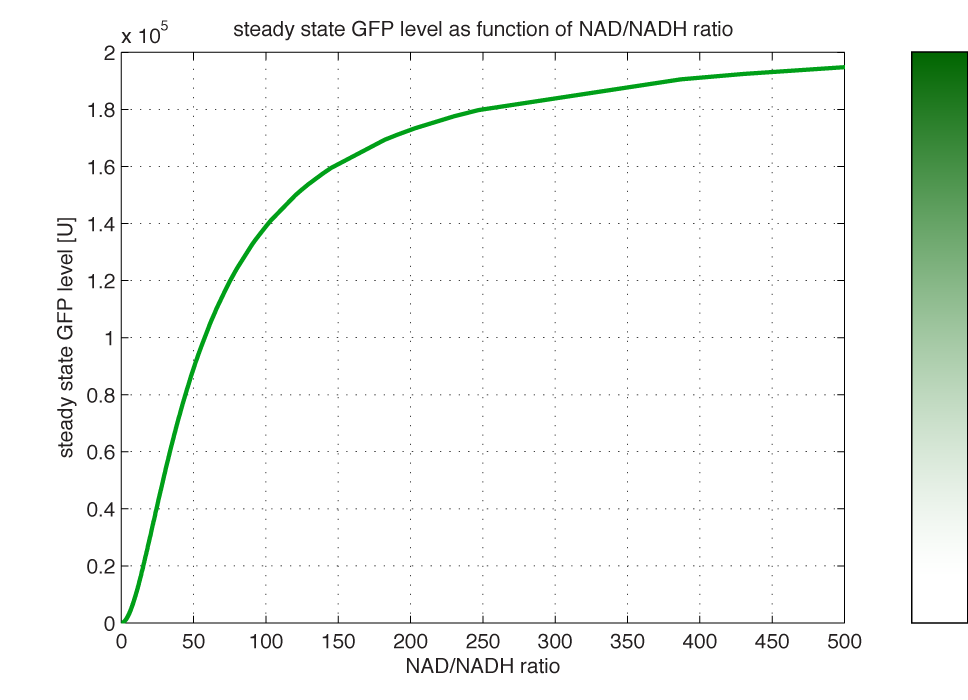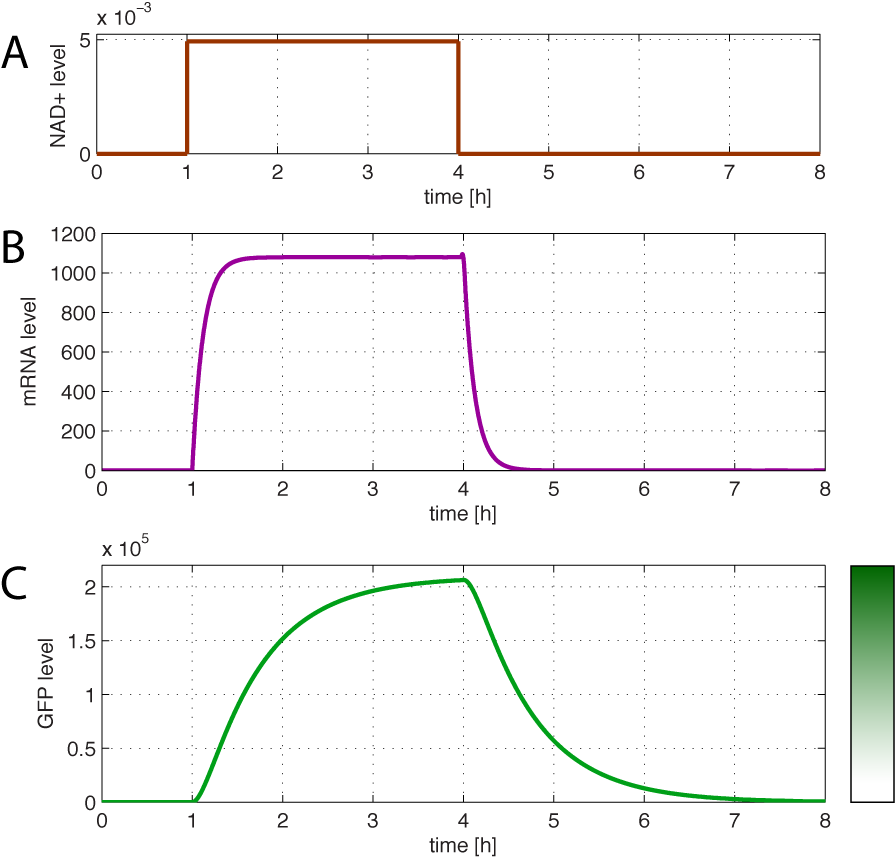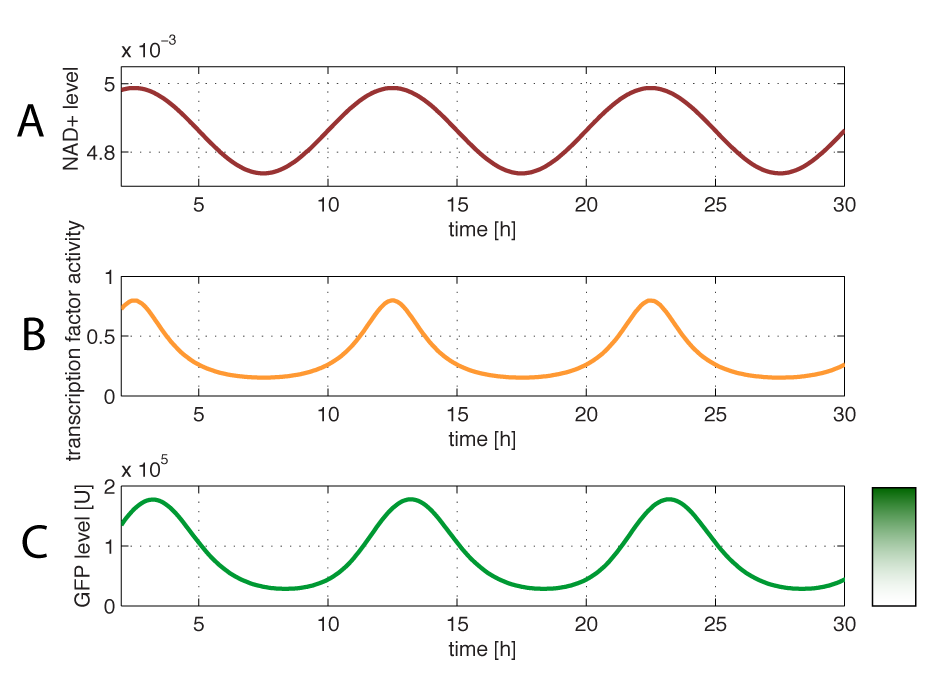Team:DTU Denmark/modelling
From 2009.igem.org
(Difference between revisions)
| (7 intermediate revisions not shown) | |||
| Line 165: | Line 165: | ||
<tr> | <tr> | ||
<td width="163px" height="100%" valign="top"> | <td width="163px" height="100%" valign="top"> | ||
| - | + | <!-- | |
| + | <font color="#990000" face="arial" size="3"> | ||
<br> | <br> | ||
Also check out our Danish website<br><br> | Also check out our Danish website<br><br> | ||
| Line 173: | Line 174: | ||
<br> | <br> | ||
</font> | </font> | ||
| + | --> | ||
</td> | </td> | ||
<td width="556px" height="100%" valign="top"> | <td width="556px" height="100%" valign="top"> | ||
<font color="#990000" face="arial" size="5"> | <font color="#990000" face="arial" size="5"> | ||
<br> | <br> | ||
| - | <b>Modelling of | + | <b>Modelling of The Redoxilator</b><br><br> |
</font> | </font> | ||
| Line 198: | Line 200: | ||
<br><br> | <br><br> | ||
| + | </html> | ||
| + | [[Image:ReporterMechanism.png|400px|thumb|center|The redox coupled system]] | ||
| + | <html> | ||
| + | |||
| + | <p align="justify"><i><b>Gene design and redox regulation</b><br> | ||
| + | NADH and NAD competes about binding to REX, however only when NADH is bound, the trancription factor is inhibited from binding to DNA. When the transcription factor is active (NADH not bound), the fused activator domain summons the RNA polymerase and the reporter gene is transcribed.</i></p><br> | ||
| + | |||
<font size="3"><p><b>NADH and NAD binding to the transcription factor</b></p></font> | <font size="3"><p><b>NADH and NAD binding to the transcription factor</b></p></font> | ||
| Line 282: | Line 291: | ||
The term </html>[[image:picture_22.png]]<html> represents the dilution due to growth. However mRNA is highly unstable and is thus degraded within tens of seconds to order few minutes, making <i> k_dm</i> very small compared to growth rate. This makes </html>[[image:picture_24.png]]<html>, simplifying the mRNA balance to: | The term </html>[[image:picture_22.png]]<html> represents the dilution due to growth. However mRNA is highly unstable and is thus degraded within tens of seconds to order few minutes, making <i> k_dm</i> very small compared to growth rate. This makes </html>[[image:picture_24.png]]<html>, simplifying the mRNA balance to: | ||
| - | <br></html>[[image:picture_25.png]]<html><br><br> | + | <br></html>[[image:picture_25.png]]<html> (9)<br><br> |
<b>Production rate of mRNA </b> </html>[[image:picture_26.png]]<html> <br> | <b>Production rate of mRNA </b> </html>[[image:picture_26.png]]<html> <br> | ||
| Line 352: | Line 361: | ||
<br><br> | <br><br> | ||
| - | If the NAD/NADH level changes in time, all values depending on NAD(H) concentrations will also be time depending. | + | If the NAD/NADH level changes in time, all values depending on NAD(H) concentrations will also be time depending. This will result in periodic burst in the production of the protein under control of the redox system: |
<br></html>[[image:Dynamic2.png|500px|thumb|center]]<html> | <br></html>[[image:Dynamic2.png|500px|thumb|center]]<html> | ||
<i><b>Figure 6 - Dynamics of GFP expression when NAD+ level is changed</b> <br> | <i><b>Figure 6 - Dynamics of GFP expression when NAD+ level is changed</b> <br> | ||
| - | <b>A:</b> | + | <b>A:</b>Simulated change in NAD+/NADH level.<b>B:</b> Since NAD+/NADH ratio changes periodically, also transcription factor activity changes.<b>C:</b> The changes in NAD+ affects the dynamic GFP levels. |
</i> | </i> | ||
<br><br> | <br><br> | ||
| - | Figure 6 shows how the protein under control of the redoxilator is produced in bursts. Due to the fast degradation of GFP in this case, | + | Figure 6 shows how the protein under control of the redoxilator is produced in bursts. Due to the fast degradation of GFP in this case, GFP levels will change in response to the redox level with a fast response time. |
<br><br> | <br><br> | ||
| Line 383: | Line 392: | ||
<b>Abbreviations used in the model</b> | <b>Abbreviations used in the model</b> | ||
| - | <br> | + | <br><br> |
| - | <i>TF</i> = the transcription factor based on the REX protein <br> | + | <i>TF</i> = the transcription factor based on the REX protein <br><br> |
| - | <i>TF'</i> = active transcription factor <br> | + | <i>TF'</i> = active transcription factor <br><br> |
| - | <i>N</i> = concentration of NAD <br> | + | <i>N</i> = concentration of NAD <br><br> |
| - | <i>H</i> = concentration of NADH <br> | + | <i>H</i> = concentration of NADH <br><br> |
| - | <i>TFH</i> = concentration of the transcription factor bound to NADH. <br> | + | <i>TFH</i> = concentration of the transcription factor bound to NADH. <br><br> |
| - | <i>TFN</i> = concentration of the transcription factor bound to NAD. <br> | + | <i>TFN</i> = concentration of the transcription factor bound to NAD. <br><br> |
| - | <i>P</i> = Promoter upstream of GFP <br> | + | <i>P</i> = Promoter upstream of GFP <br><br> |
| - | <i>P'</i> = activated/transcribed promoter <br> | + | <i>P'</i> = activated/transcribed promoter <br><br> |
| - | <i>tf</i> = fraction of active transcription factor <br> | + | <i>tf</i> = fraction of active transcription factor <br><br> |
| - | <i>Pf</i> = fraction of active promoter<br> | + | <i>Pf</i> = fraction of active promoter<br><br> |
<br> | <br> | ||
Latest revision as of 01:12, 22 October 2009

| Home | The Team | The Project | Parts submitted | Modelling | Notebook |
| Comments or questions to the team? Please Email us -- Comments of questions to webmaster? Please Email us |
 "
"




